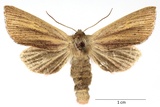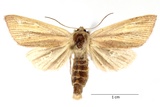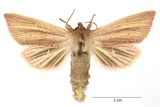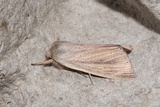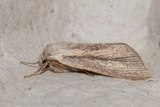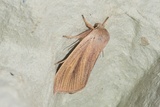Sedina buettneri (Hering E., 1858) Species
Last modified: Nov. 19, 2025, 2:33 p.m.
A very rare and extremely local species in Belgium.
This species is considered Endangered according to the IUCN Red List category for Flanders 2023.
Details
- Classification
- Family: Noctuidae > Subfamily: Xyleninae > Tribus: Apameini > Genus: Sedina > Species: Sedina buettneri
- Vernacular names
- Moeraszeggeboorder (NL), Blair's Wainscot (EN), La Noctuelle de la Brouille (FR), Büttners Schrägflügeleule (DE)
- First mention in Belgium
- Berger L. A. 1947a. Espèces nouvelles pour la faune belge (suite). — Lambillionea 47: 27, 59–61, 78. On page 61.
- Status
-
Native In Belgium since October 1947.
Distribution
Bionomics
The larva feeds inside the stems and leaves of the host plant. Hibernates as an egg, laid in rows on the leaves of the food plant. Pupates near ground level, within a stem of the food plant.
The adults are active from dusk onwards and later come sparsely to light.
Flight periods
The adults fly from late September till late October in one generation.
Observed on
- Host plant (species):
- Carex acutiformis and Glyceria maxima
- Substrates:
- Grasses
The larva feeds on Glyceria maxima and Carex acutiformis.
Habitat
It is to be found in marshy areas and other damp localities.
